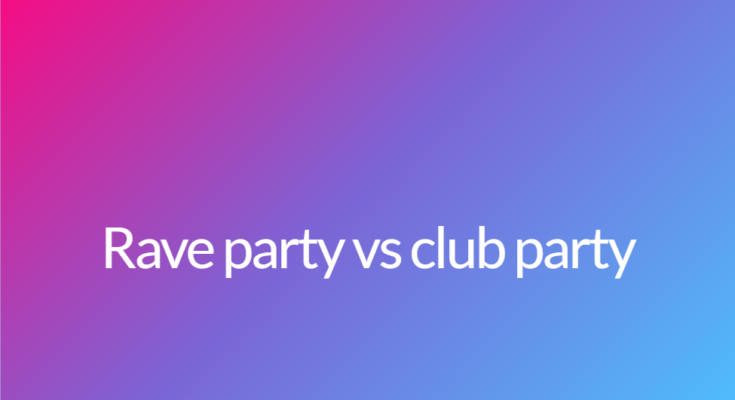Introduction:
Parties are a great way to let loose, have fun, and socialize with friends. When it comes to parties, there are different types that one can attend. Two popular types of parties are rave parties and club parties. While they may both involve dancing and music, there are some key differences between the two. In this article, we will explore the differences between rave parties and club parties.
Difference between Rave Parties and Club Parties:
1. Atmosphere: One of the main differences between rave parties and club parties is the atmosphere. Rave parties usually take place in large open spaces such as warehouses or fields. The atmosphere is characterized by neon lights, lasers, and glow sticks. On the other hand, club parties take place in established venues such as nightclubs or bars. The atmosphere is usually more intimate, with dim lighting and a more structured layout.
2. Music: Another significant difference between rave parties and club parties is the type of music played. Rave parties are known for their electronic dance music (EDM) or techno music. The beats are typically fast-paced, and the music is often mixed by DJs. In contrast, club parties generally play a variety of music genres, including EDM, hip-hop, pop, and R&B. The choice of music may depend on the theme of the party or the preferences of the club’s regular attendees.
3. Dress Code: The dress code at rave parties and club parties also differs. Rave parties are known for their vibrant and eccentric fashion choices. Attendees often wear neon clothing, face paint, and accessorize with glow sticks or LED jewelry. The focus is on self-expression and creativity. Club parties, on the other hand, tend to have a more relaxed dress code, with attendees opting for stylish and fashionable attire. Depending on the club, there may be certain dress requirements such as no sports shoes or casual wear.
4. Crowd: The crowd at rave parties and club parties can vary. Rave parties attract a diverse group of people, including rave enthusiasts, EDM lovers, and those seeking a unique and immersive experience. The crowd is often energetic and enthusiastic about the music. Club parties, on the other hand, tend to attract a broader range of individuals, including regular club-goers, party enthusiasts, and those looking to socialize. The crowd at club parties is usually more diverse in terms of age and interests.
5. Duration: Rave parties and club parties also differ in terms of duration. Rave parties are known for their longer durations, often lasting throughout the night, sometimes even until dawn. The extended duration allows attendees to fully immerse themselves in the experience and lose track of time. Club parties, on the other hand, have more fixed timing, starting in the evening and ending late at night. They typically follow a schedule and may include guest performances or themed events.
Conclusion:



